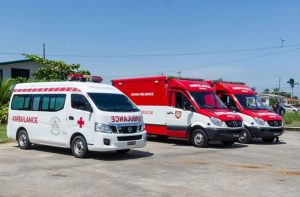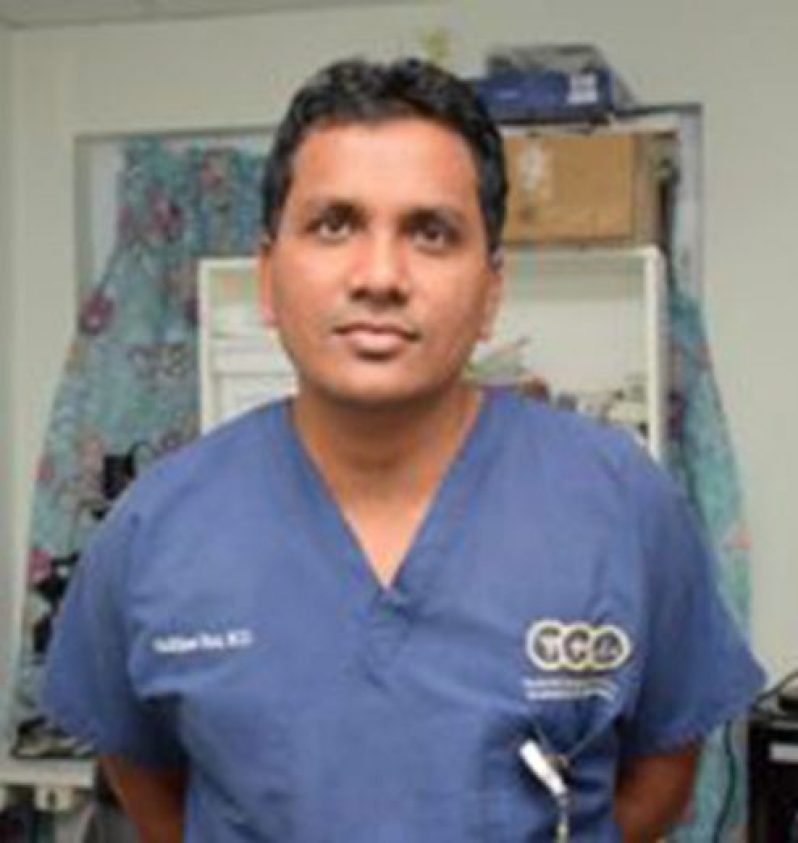EARLIER this month, the National Assembly approved a $21.3 billion Supplementary Budget to address a number of pressing issues, including the nationwide floods.
In that, a sum of $1.9 billion was directed to the Ministry of Health and some of these monies will be allocated for the purchase of three new ambulances, two of which have already been promised to the Guyana Fire Service (GFS).
Director of the Emergency Medical Service (EMS), Dr. Zulfikar Bux welcomed the allocation, explaining that because the two agencies operate in unison to respond to medical-related emergencies, the ambulances will, by extension, serve the EMS outside of fire-related situations.
“Right now, we are covering Georgetown; we have an additional two ambulances that the fire service is planning to roll out by the end of July; one for Diamond (Housing Scheme, East Bank Demerara) and one for Melanie (East Coast Demerara),” Dr. Bux told the Guyana Chronicle on Sunday.
As it is, Region Four has a complement of four ambulances, which is only half of what is required to ensure coverage in the region. Dr. Bux is hopeful that within the next year, the EMS could possibly be expanded and become fully capable of extending the reach of Emergency Medical Technicians (EMT)s outside of Region Four.

Since its implementation in 2016, the EMS has responded to thousands of medical emergencies, saving perhaps hundreds of lives in the process. However, its operations have been limited and even hindered by the shortage of key resources such as ambulances.
With the government gradually responding to the needs of the EMS, Dr. Bux is hopeful that the country could be able to purchase at least four ambulances each year, until the EMS has enough to provide countrywide coverage of the main carriageways. “From Skeldon to Parika and to Linden…we are doing a phased implementation,” Dr. Bux added.
Prior to the establishment of the EMS, medical resuscitations outside of a hospital was almost unheard of, because more often than not, medical emergencies in Guyana, especially road accidents, are first responded to by public-spirited citizens with no medical background, and in most cases, a person who is not breathing, is already considered dead.
But with the EMS, many persons have been successfully resuscitated even before they could reach the hospital. This accomplishment alone has underscored the need for the expansion and continued development of the EMS, the brainchild of Dr. Bux.
The EMS Director had indicated that over the past couple of years, the National EMS has responded to more than 15,630 medical emergencies that have been reported via the Guyana Fire Service ‘912’ emergency hotline. “Numerous lives were saved and there has been a positive impact on pre-hospital emergency response locally,” Dr. Bux told the Guyana Chronicle during a previous interview.
He had said then that despite limited resources and a host of infrastructural challenges, EMTs have also been able to deliver close to 20 babies, en-route to the hospital. “This service has proven its worth worldwide and helps to save so many lives and we are seeing similar effects in Guyana. We want to save more lives and answer all the calls for help, but we cannot cover the entire country with a couple of ambulances,” Dr. Bux noted. He said that the EMS has at its disposal, the expertise of approximately 100 fully trained EMTs.
“I sometimes fantasize about the day when every Guyanese can have emergency access to paramedics anywhere in Guyana by calling the emergency hotline. I am still optimistic we will get there and I’ll do all that I can to achieve this goal,” Dr. Bux said previously.



.jpg)










